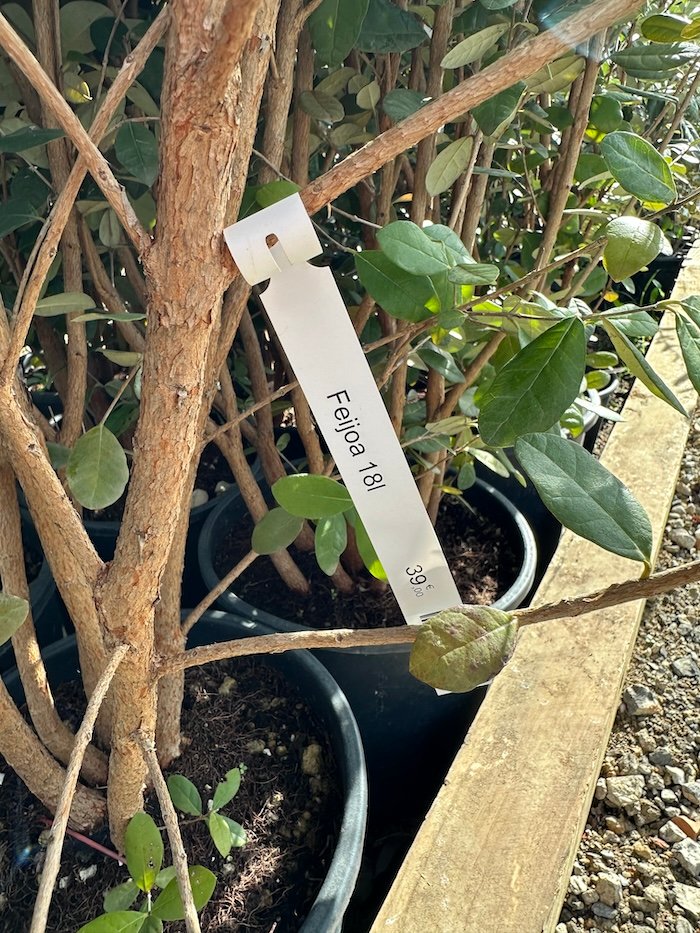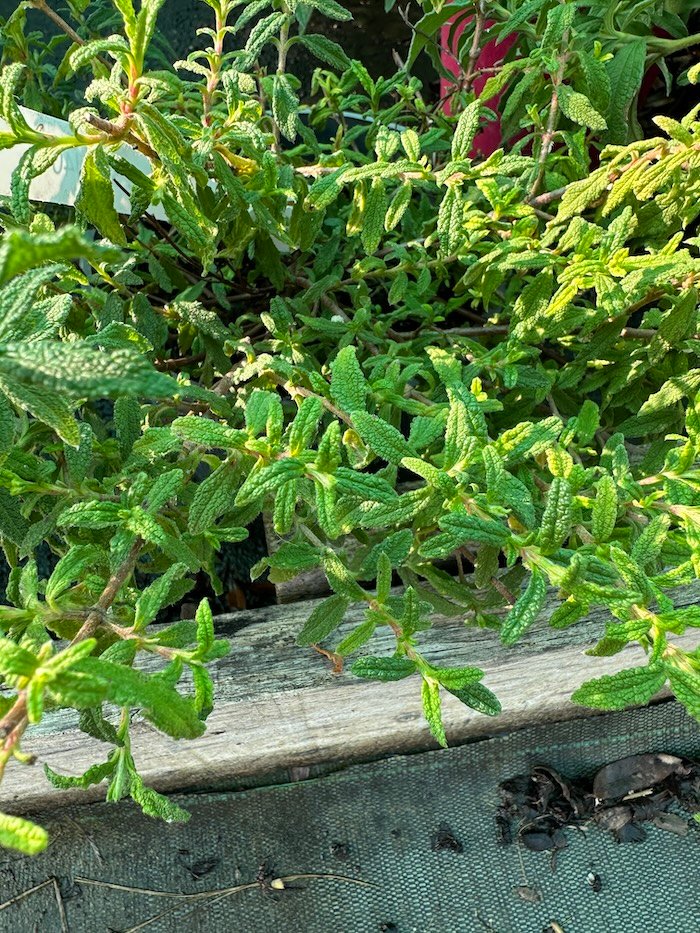After cutting back all the gigantic old Atriplex halimus shrubs eaten up by Monoxia obesula we needed to plant other shrubs to provide soil cover on our steep slope and to replace the Atriplex over time.
Replacement plants needed to fulfill some very specific requirements:
- they needed to be evergreen to provide cover even in winter
- they needed to grow a good root system to keep soil from moving
- they needed to be as heat- and drought-resistant as possible because the slope is fully sun exposed and too steep for effective watering
- they needed to have allelopathic properties because the slope is too steep for regular weeding
- they needed to be low maintenance because the slope is too steep for regular trimming
- they needed to grow as quickly as possible to protect the soil
The gardener as well as the garden center people had plenty of ideas for “garrigue plants”, but unfortunately they were pretty nonspecific and not suited to this particular slope. They mostly do not seem to be aware that not everything that is called “Ciste” for instance is created equal, concerning its final size, growth habit, soil preferences, drought-resistance, etc. And they had never heard of allelopathic plants.
I also wanted to plant a Feijoa (guava) tree for fruit. There are many different varieties but for a smaller garden, where you can plant just one, you need to get the ones that are truly autofertile. Yet the garden center manages to offer about fifty plants with solely “Feijoa” on the name tag. And no one there knows what cultivar they’re actually selling because they are apparently buying plants unspecifically and en masse “from Italy”. The differences between various Mimosa, Acacia or Tamarix trees are also completely unknown. Another garden center sells things like “Lagerstroemia Red”. There are probably twenty cultivars of Lagerstroemia in red, varying in size from 150 to 500 cm… I almost get screaming fits searching for specific plants.
Off-line garden centers really should not wonder that people who do their research are ordering plants online where they get full names and specifications.

For the slope I ended up buying:
- Tamarix gallica – not too big, rapid growth, drought- and heat-resistant
- Pistacia lentiscus – very drought- and heat-resistant, allelopathic
- Bupleurum fruticosum – drought- and heat-resistant and self-seeding
- Foeniculum vulgare – drought- and heat-resistant and self-seeding
- Cistus purpureus, albidus, verguinii, curvativus…- drought- and heat-resistant, allelopathic
- Phlomis purpurea almeriensis, Le Chat, cytherea, chrysophylla… – drought- and heat-resistant, allelopathic
- Suaeda vera – drought- and heat-resistant, not bothered by salt
- Ballota pseudodictamnus – drought- and heat-resistant, allelopathic
- Centaurea argentea – drought- and heat-resistant, large low cover
- Convolvulus oleifolius – drought- and heat-resistant
- Cistus lenis Grayswood Pink – drought- and heat-resistant, allelopathic, large low ground cover
- Salvia Bee’s Bliss – drought- and heat-resistant, allelopathic, large low ground cover
- Limoniastrum monopetalum Carnaval – drought- and heat-resistant, allelopathic, large low ground cover
- Cistus pulverulentus – allelopathic, large and low cover
- etc.
I wanted plants of different heights and sizes and varieties, because at this point it is hard to say what will actually thrive on that steep, hot and dry slope that also has been “salted” for decades by the falling Atriplex leaves. Stay tuned.

Leave a Reply